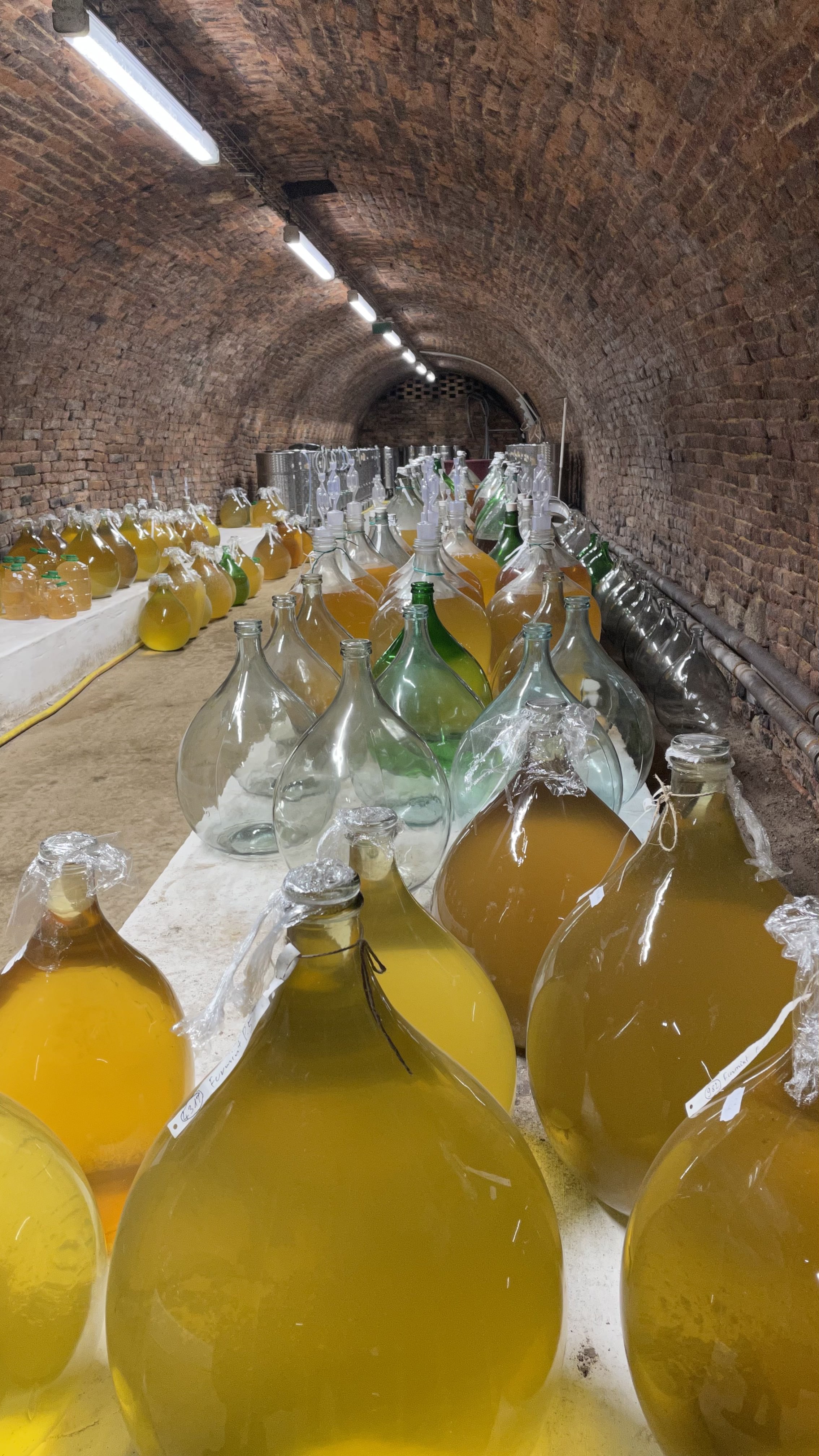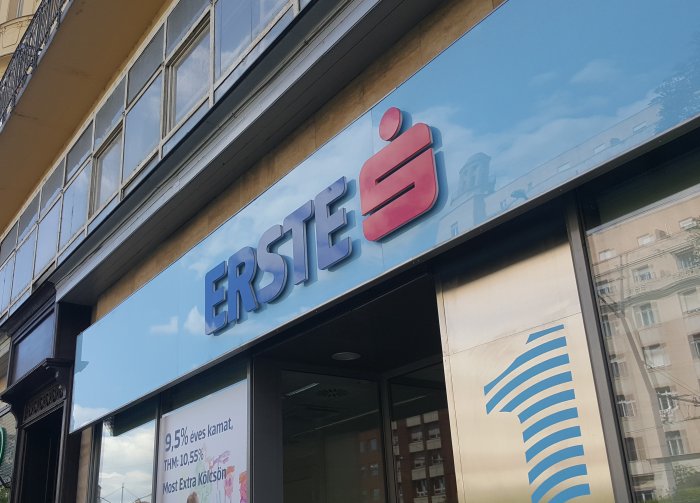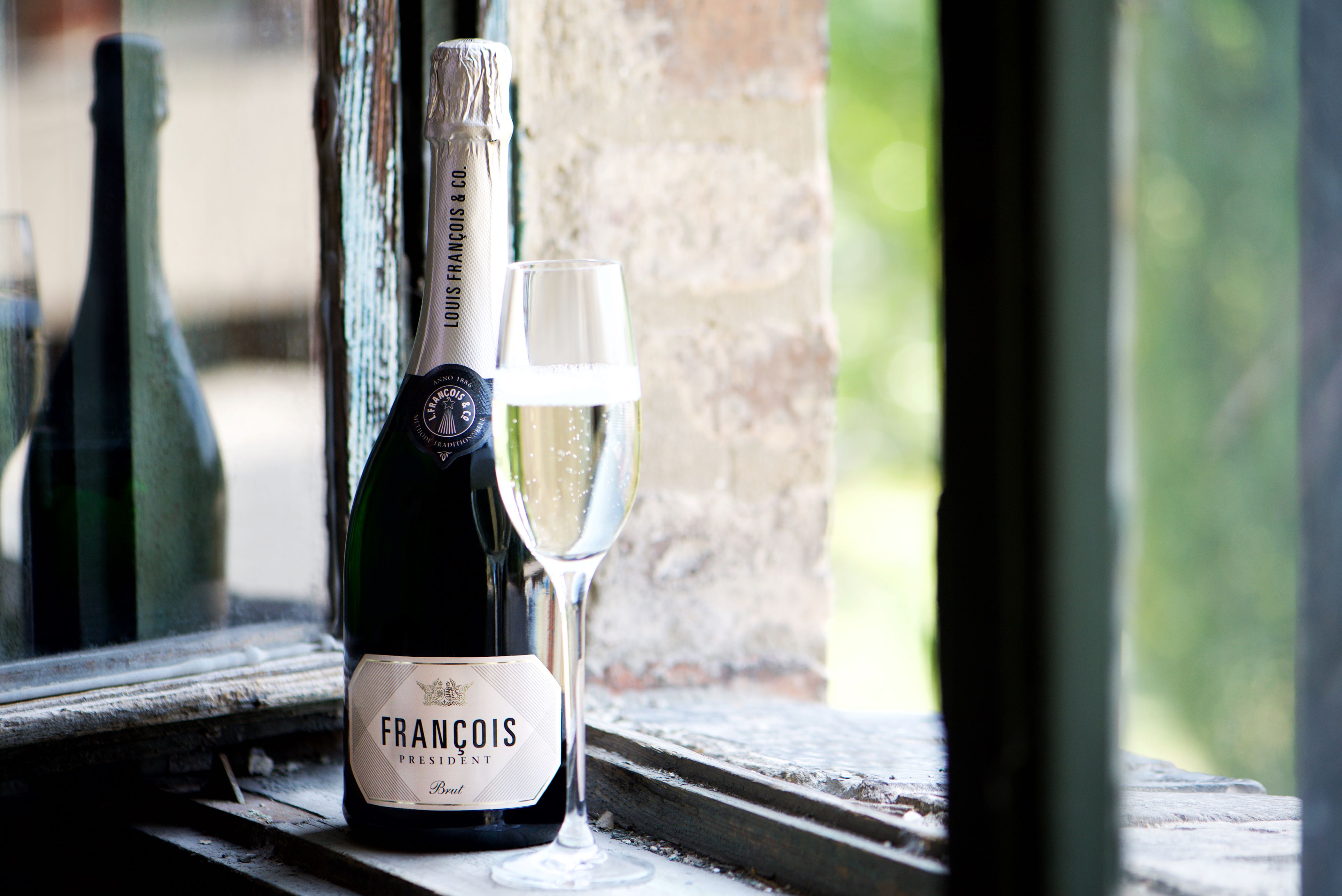Reaping the Research With the University of Pécs

Countless winemakers and grape growers who I encounter on my travels around the Hungarian wine regions mention they are working in some capacity with the Research Institute of Viticulture and Enology of the University of Pécs. With its assistance, they plant new varieties and clones or re-establish ancient ones that have faded into obscurity.
The research institute has 1,800 grape varieties, one of the most significant collections globally, planted across 35 hectares at two sites. The larger of these is its Szentmiklós site on the slopes of Mecsek Hill, to the north of the city of Pécs. It also makes countless experimental and other wines, with some 10,000-15,000 bottles released each year commercially. The institute’s atmospheric, cavernous cellar is 300 years old and once belonged to the local bishop.
“It’s very romantic, but not so practical,” says István Ipacs Szabó, the institute’s chief winemaker, as we stand on the cellar’s earthen floor. There are glass carboys and even plastic bottles everywhere I look, each containing a different wine. I sample a citrusy white wine from a grape called Tihanyi, which comes from the grapes of just six vines, then a lemony-nutty white from the Tüskéspupu grape, served from a plastic bottle.
The institute, which the University of Pécs has owned since 2008, works according to a three-pronged approach of research, education and consultancy. It carries out clonal selection, scouring the vineyards of Hungary for rare clones of grape varieties. These are grown in its vineyards to be disease-free, so they can be propagated elsewhere, meeting new demands from producers and consumers.
It does this with grape varieties like Kadarka (working a lot with producers in nearby Szekszárd, such as Heimann), Furmint and the Pécs wine region’s very own Cinfandli. The institute also performs cross-breeding with grape varieties sourced from around the world, developing new, high-quality, healthy and robust cultivars that are fungus-resistant, particularly against the troublesome powdery mildew, downy mildew and grey rot. Another function of the institute is experimentation in preparation for upcoming problems for grape growers.
Climate Change
“We try out things here to get ahead for the future,” Ipacs Szabó explains. This includes analyzing the effects of heat and water stress on the vines in preparation for climate change scenarios and finding grape varieties and clones suitable in such conditions.
Ipacs Szabó was chief winemaker at Villány’s Vylyan Szőlőbirtok és Pincészet from 1999 until last summer, when he began up his role at the institute, taking over the reins from Lászlo Hevér. Ipacs Szabó also runs his own family winery in Kövesföld, Villány, as well as tending the vines and making the wines for a foreign neighbor on Tenkes Hill. As I mentioned in my last column, Ipacs Szabó was also shortlisted for the Hungarian Wine Academy’s Winemaker of the Year 2021 medal, so he clearly knows his stuff.
The institute’s wine can be purchased from its webshop at www.pteshop.hu, with free delivery in Hungary for orders of more than HUF 25,000, or via pannonborbolt.hu. Its Summa Cabernet Sauvignon 2017, which won a gold medal at Hungary’s VinAgora International Wine Competition, is classy and balanced with fabulously integrated oak, silky tannins, juicy black fruit and a nice touch of spiciness. It is good value at HUF 4,380.
The Pécs region is somewhat known for the white Cirfandli grape variety (although it can take on a reddish color), the same grape as Austria’s Zierfandler (a natural crossing of Roter Veltliner and a Traminer-like variety), from that country’s Thermenregion. However, it has nothing to do with red Zinfandel, which has been traced back to Croatia, to the Dalmatian islands where it is now called Tribidrag, rather than the almost impossible to pronounce Crljenak kaštelanski.
The Institute’s Cirfandli késői szüret (Late Harvest) 2017 is richly floral, fruity and waxy, with dried apricot notes of botrytis or “noble rot” teasing you into thinking it’s going to be sweet, but it finishes towards the dry end of the spectrum. It is undoubtedly an experience to taste and is a bargain at HUF 1,853; it makes a good partner for spicy Asian food.
Swabian Village
Not far from Pécs, in the charming one-time Swabian village of Mecseknádasd, the Hetényi winery makes wine mainly from grapes brought in from the region of Szekszárd. Hétenyi has 40 hectares in Szekszárd and one in Pécs, from which latter it makes a creamy, herbal and complex dry Cirfandli, though not in every vintage. The 2018 costs HUF 2,590 from hetenyipince.hu.
In Sárospatak in the northern end of the Tokaj wine region, far from Pécs, Tomi Vincze is an exciting, upcoming and experimental young winemaker who is working with the Pécs Research Institute to plant the Purcsin grape variety. It grew in the Tokaj region up until it was wiped out by the phylloxera louse around the turn of the 20th century. The Basilicus winery in Tarcal has already brought out several vintages of this light but vibrant and spicy wine.
Vincze, who currently makes just 5,000 bottles of wine a year from two hectares and expects to be certified organic later this year, showed me some of his new releases. His 2019 Orange wine is a blend of Furmint (60%) and Hárslevelű (40%).
Many believe that Furmint is unsuitable for making orange wine as keeping it on the skins draws out the bitter phenolics, but there is no bitterness here, probably thanks to the generosity and soft touch of the Hárslevelű. It oozes aromas and flavors of black tea, orange peel, apricot and winter spices and is beautifully balanced and long with no rough edges. It is a bargain at HUF 2,000 from the cellar.
Vincze’s pale pink Pét-Nat Kékfrankos rosé, which was kept on the skins for eight hours and was fermented for two weeks, was delightfully fizzy, fresh and fruity, with flavors of juicy raspberry and strawberry to match its color. The ultra-trendy Pét-Nat is short for Pétillant-naturel, whereby natural bubbles are retained when the still-fermenting wine is bottled using the méthode ancestrale (ancestral method). It usually contains sediment, as this one does, which renders the wine cloudy in the glass. These two Vincze wines should soon be available from Borfalu at Szondi utca 66 in Budapest’s District VI (or borfalu.hu) and the radovin.hu wineshop.
This article was first published in the Budapest Business Journal print issue of January 28, 2022.
SUPPORT THE BUDAPEST BUSINESS JOURNAL
Producing journalism that is worthy of the name is a costly business. For 27 years, the publishers, editors and reporters of the Budapest Business Journal have striven to bring you business news that works, information that you can trust, that is factual, accurate and presented without fear or favor.
Newspaper organizations across the globe have struggled to find a business model that allows them to continue to excel, without compromising their ability to perform. Most recently, some have experimented with the idea of involving their most important stakeholders, their readers.
We would like to offer that same opportunity to our readers. We would like to invite you to help us deliver the quality business journalism you require. Hit our Support the BBJ button and you can choose the how much and how often you send us your contributions.










